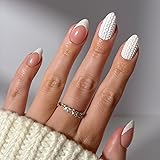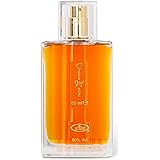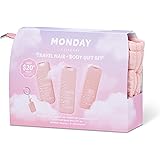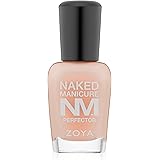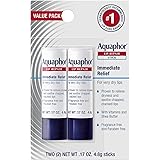Mastering Your Hair Care Routine: Essential Steps Before Wash Day
An estimated 70% of individuals report concerns about their hair health and appearance between washes. As the accompanying video plays its vibrant track, the focus here shifts to a crucial, yet often overlooked, aspect of hair maintenance: the strategic care taken in the days leading up to your wash day. This period is instrumental in preserving hair integrity and optimizing its condition for future cleansing.
Achieving consistently healthy and beautiful hair involves more than just a good wash day; it encompasses a diligent routine. Understanding how to manage your hair effectively before it is washed can significantly impact overall hair health and extend the freshness of your style.
Understanding Your Hair’s Unique Needs for Optimal Hair Care
Each individual’s hair possesses distinct characteristics, dictating its specific requirements. Factors such as hair type—fine, thick, curly, straight—and scalp condition play a pivotal role in determining the most effective pre-wash day strategies. For instance, oily scalps may necessitate different approaches compared to dry or sensitive ones.
The production of sebum, the natural oil produced by the scalp, varies greatly among individuals. This natural lubrication is essential for hair health, but its excess can lead to greasiness, while insufficient production may result in dryness. An effective hair care routine adapts to these inherent biological differences, ensuring balance.
The Science of Sebum and Scalp Health for Your Hair Routine
Sebum, produced by sebaceous glands, serves to moisturize the scalp and hair, providing a protective barrier. However, accumulation of sebum can attract environmental pollutants and product residue, leading to dullness and potential scalp issues. Proper management of sebum levels is therefore critical for sustained hair health.
Scalp health is frequently considered the foundation of robust hair growth and vitality. Imbalances in the scalp microbiome or excessive product build-up can impede nutrient delivery to hair follicles. Regular, gentle scalp care between washes can prevent these problems, contributing to a better overall hair care outcome.
Extending Freshness: Strategies for “No Wash” Days and Your Hair Care Routine
The desire to extend the period between wash days is a common goal for many, driven by time constraints or the aim to reduce potential hair damage from frequent washing. Several techniques are effectively employed to maintain hair’s freshness and appearance during these intervals. These methods help to manage oil, minimize tangles, and protect strands.
Incorporating these strategies into your daily hair routine can significantly improve the longevity of your style. It also contributes to a less burdensome hair care schedule, making healthy hair maintenance more achievable.
Effective Dry Shampoo Application for Prolonged Hair Freshness
Dry shampoo is frequently utilized as a key product for absorbing excess oil and revitalizing hair between washes. Its effectiveness lies in its ability to absorb sebum from the scalp, instantly reducing a greasy appearance. Correct application techniques are paramount for achieving optimal results without leaving visible residue.
The product should be sprayed primarily at the roots, where oil accumulation is most prominent, rather than throughout the entire hair shaft. After application, it is often recommended that the product be allowed to sit for a few minutes before being massaged into the scalp and then brushed through. This allows the absorbing agents to fully engage with the oils, providing a cleaner finish.
Protective Hairstyles: Safeguarding Hair Between Washes
Protective hairstyles are another vital component of a comprehensive hair care strategy, especially when extending the time between washes. Styles such as loose braids, low buns, or the “pineapple” method for curly hair can minimize friction and environmental exposure. These styles help to prevent tangles, reduce breakage, and keep hair tidier.
Sleeping on a silk or satin pillowcase is also frequently recommended to reduce friction on the hair strands. This minor adjustment can significantly mitigate damage that might otherwise occur overnight. Such preventative measures are easily integrated into any daily hair routine, offering substantial long-term benefits.
Targeted Scalp Care for a Balanced Hair Routine
Beyond dry shampoo, specific scalp treatments are sometimes incorporated to address particular concerns, such as dryness or irritation. Gentle scalp massages, performed with fingertips, can stimulate blood circulation, which is beneficial for follicle health. Specialized scalp serums or tonics are also available, formulated to nourish and soothe the skin.
These targeted interventions help to maintain a healthy scalp environment, which is directly linked to the strength and appearance of the hair. Addressing scalp issues proactively can prevent them from escalating, thus supporting a robust hair care regimen.
Nourishment and Protection: Maintaining Hair Integrity for Your Hair Care
Maintaining the structural integrity and moisture balance of hair strands is a continuous process, not just an activity reserved for wash day. Between washes, hair is still exposed to environmental stressors, requiring ongoing protection and nourishment. This consistent attention ensures that hair remains resilient and vibrant.
Incorporating specific products and techniques into your daily hair routine can significantly contribute to preserving hair’s health. The goal is to minimize damage and maximize hydration, ensuring that hair is prepared for its next wash without excessive wear.
Hydration and Moisture Retention: Key to a Healthy Hair Routine
Hair hydration is paramount, especially for ends that are prone to dryness and breakage. Leave-in conditioners, hair mists, and lightweight oils can be applied sparingly to the mid-lengths and ends of the hair. These products help to seal the cuticle, preventing moisture loss and providing a layer of protection against external elements.
Regular, but judicious, application of moisturizing agents helps to keep hair supple and reduces frizz. The choice of product often depends on hair type; finer hair may benefit from lighter mists, while thicker or curlier textures might require richer oils or creams. This personalized approach is fundamental to an effective hair care strategy.
Gentle Detangling: Preventing Breakage in Your Hair Routine
Proper detangling techniques are essential for preventing hair breakage, particularly when hair is dry and potentially more fragile. A wide-tooth comb or a detangling brush is often recommended, used with gentle, downward strokes starting from the ends and gradually working upwards to the roots. This method minimizes stress on the hair shaft.
Applying a detangling spray or a small amount of leave-in conditioner before combing can further assist in smoothing out knots. This reduces friction and makes the detangling process much easier and less damaging. Such careful handling is a cornerstone of any effective hair care plan.
Minimizing Damage: Heat Avoidance and Mindful Styling
Excessive heat styling is frequently cited as a major contributor to hair damage, leading to dryness, brittleness, and split ends. Reducing the use of heat tools, or utilizing them on lower settings with a heat protectant, is a critical step in preserving hair health. Air drying is often preferred when possible, or diffusers can be used on a cool setting.
Gentle brushing and avoiding harsh pulling or tight hairstyles also play a role in damage prevention. Hair elastic choices, such as silk scrunchies, can significantly reduce tension and breakage. These small adjustments in your daily hair routine collectively contribute to stronger, healthier hair.
Preparing for Wash Day: Setting the Stage for Success in Your Hair Routine
The moments leading up to your wash day can be used strategically to enhance the cleansing and conditioning process. This preparatory phase can improve product penetration, facilitate detangling, and address specific scalp or hair concerns. A well-executed pre-wash routine sets the foundation for a truly effective wash.
Taking these intentional steps ensures that the hair is in its best possible state to receive the benefits of shampoos and conditioners. This thoughtful approach transforms wash day from a chore into a beneficial ritual within your broader hair care framework.
Pre-Poo Treatments: Enhancing Your Wash Day Experience
Pre-poo treatments, applied before shampoo, are frequently utilized to protect hair strands from the stripping effects of some shampoos. These treatments typically involve applying oils, deep conditioners, or masks to dry hair, allowing them to sit for a period. This creates a barrier, helping hair to retain its natural moisture during cleansing.
Such treatments are especially beneficial for dry, damaged, or curly hair types, which are often more susceptible to dryness. They can also aid in detangling, making the subsequent washing process smoother and reducing breakage. The integration of a pre-poo is an advanced but effective addition to a robust hair routine.
Clarifying Shampoos: When and Why They Are Used
Periodically, a clarifying shampoo may be incorporated into the wash day routine to remove stubborn product build-up, hard water mineral deposits, or excess oils that regular shampoos might miss. This deeper cleanse revitalizes the scalp and hair, allowing subsequent conditioning treatments to penetrate more effectively. However, their use should be infrequent.
Overuse of clarifying shampoos can strip hair of essential moisture, leading to dryness. It is generally recommended that they be used perhaps once a month, or as needed, depending on lifestyle and product usage. This ensures a balanced approach to deep cleansing within your comprehensive hair care strategy.
Mindful Product Selection: The Foundation of Your Hair Care Strategy
The conscious selection of hair care products forms the bedrock of an effective hair routine. Consideration is often given to formulations free from harsh sulfates, silicones, and parabens, especially for those with sensitive scalps or color-treated hair. Sulfates can sometimes be overly stripping, while certain silicones may lead to build-up.
Understanding ingredients and choosing products tailored to your specific hair type and concerns are crucial. This informed approach ensures that every product applied contributes positively to hair health, rather than exacerbating existing issues. This careful consideration elevates the entire hair care journey.




